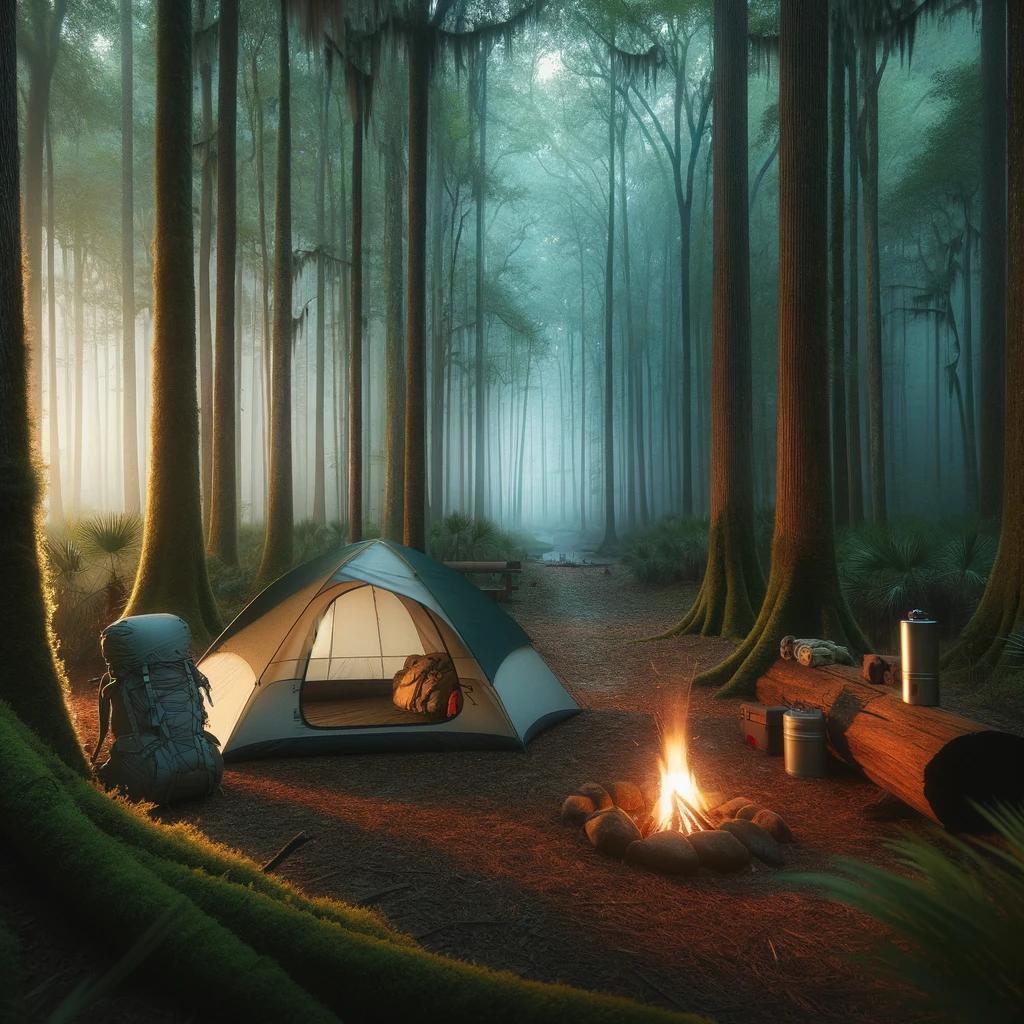Seasonal tent camping offers outdoor enthusiasts the opportunity to experience nature’s ever-changing beauty throughout the year. From spring’s vibrant renewal to winter’s serene stillness, each season presents unique challenges and rewards for campers. This guide will equip you with the knowledge and strategies needed to make the most of your camping adventures, no matter the time of year.
Spring Camping: Embracing Nature’s Renewal
As winter’s chill gives way to spring’s warmth, the natural world bursts into life, making it an exciting time for tent camping. However, spring weather can be notoriously unpredictable, requiring campers to be well-prepared for a range of conditions.
When choosing campsites for tent camping in spring, opt for slightly elevated areas to avoid potential flooding from melting snow or spring rains. Pack versatile clothing layers that can be easily added or removed as temperatures fluctuate. A waterproof and breathable outer layer is essential for staying dry during unexpected showers.
Spring-specific gear should include a sturdy, waterproof tent with a full rainfly, waterproof footwear, and a tarp for additional shelter. To combat muddy conditions, bring extra ground cloths and consider using lightweight, portable camping mats or platforms to keep your tent and gear off the damp ground.
Take advantage of the season by engaging in activities like wildflower identification, birdwatching, and observing the return of migratory species. Just remember to tread lightly and respect the delicate ecosystems awakening around you.
Summer Camping: Maximizing the Peak Season
Summer is the most popular time for camping, offering long days and warm temperatures perfect for outdoor adventures. However, the heat can also present challenges that require careful planning and preparation.
Staying cool is a top priority during summer camping trips. Choose a campsite with natural shade, or create your own using tarps or shade sails. Opt for a tent with excellent ventilation, including mesh panels and multiple doors that can be opened to create cross-breezes.
Hydration is crucial in hot weather. Bring plenty of water and electrolyte-rich drinks, and consider investing in a high-quality water filtration system for longer trips. Protect yourself from the sun with broad-spectrum sunscreen, UV-protective clothing, and a wide-brimmed hat.
Use lightweight, breathable sleeping bags or a liner on hot nights for nighttime comfort. A battery-powered fan can provide additional relief and help keep insects at bay.
Fall Camping: Enjoying the Colorful Transition
Fall camping offers a visual feast of autumn colors and crisp, comfortable temperatures. However, the changing weather patterns require adaptable gear and clothing strategies.
Layering is essential for fall camping. Start with a moisture-wicking base layer, add an insulating mid-layer like fleece or wool, and top it off with a water-resistant outer layer. Remember warm accessories like hats, gloves, and thick socks for chilly mornings and evenings.
As temperatures drop, ensure your sleeping bag is rated for lower temperatures than you expect to encounter. A sleeping bag liner can add extra warmth and is easy to pack. Consider bringing a portable heater for added comfort, but always follow manufacturer guidelines and campground regulations for safe use.
Fall is an excellent time for stargazing and astronomy for tent campers, as the nights grow longer and the air becomes clearer. Pack a star chart or download a stargazing app to make the most of the night sky.
Winter Camping: Conquering the Cold
Winter camping offers solitude and pristine landscapes but requires thorough preparation and specialized gear. Choosing the right equipment is crucial for both comfort and safety in cold conditions.
Invest in a four-season tent designed to withstand snow loads and high winds. Look for features like a low profile, strong poles, and minimal mesh to retain heat. Your sleeping bag should be rated for temperatures at least 10°F lower than the coldest temperature you expect to encounter. A sleeping pad with a high R-value is essential for insulating you from the cold ground.
Proper layering is critical in winter. Start with a moisture-wicking base layer, add one or more insulating mid-layers, and finish with a waterproof and windproof outer layer. Remember insulated, waterproof boots and extra pairs of warm socks.
Winter-specific safety precautions include:
- Carrying emergency shelter and fire-starting materials.
- Knowing how to recognize and treat hypothermia and frostbite.
- Being aware of avalanche risks in mountainous areas.
Essential Gear for All Seasons
While each season requires specific gear, some items are versatile enough to serve you year-round:
- A high-quality, multi-season tent with a full rain fly.
- A versatile sleeping bag system that can be adapted for different temperatures.
- Layered clothing options that can be mixed and matched for various conditions.
- A reliable camp stove that performs well in different weather conditions.
- A multi-tool or camping knife for various tasks.
- A comprehensive first-aid kit that can be supplemented for seasonal needs.
Conclusion
Investing in quality, versatile gear and adapting your packing list to each season’s unique challenges will prepare you for camping adventures throughout the year. Always check local regulations, weather forecasts, and trail conditions before starting your seasonal camping trips. With the right preparation and a spirit of adventure, you can enjoy the unique beauty and experiences each season offers in the great outdoors.

Leave a Reply